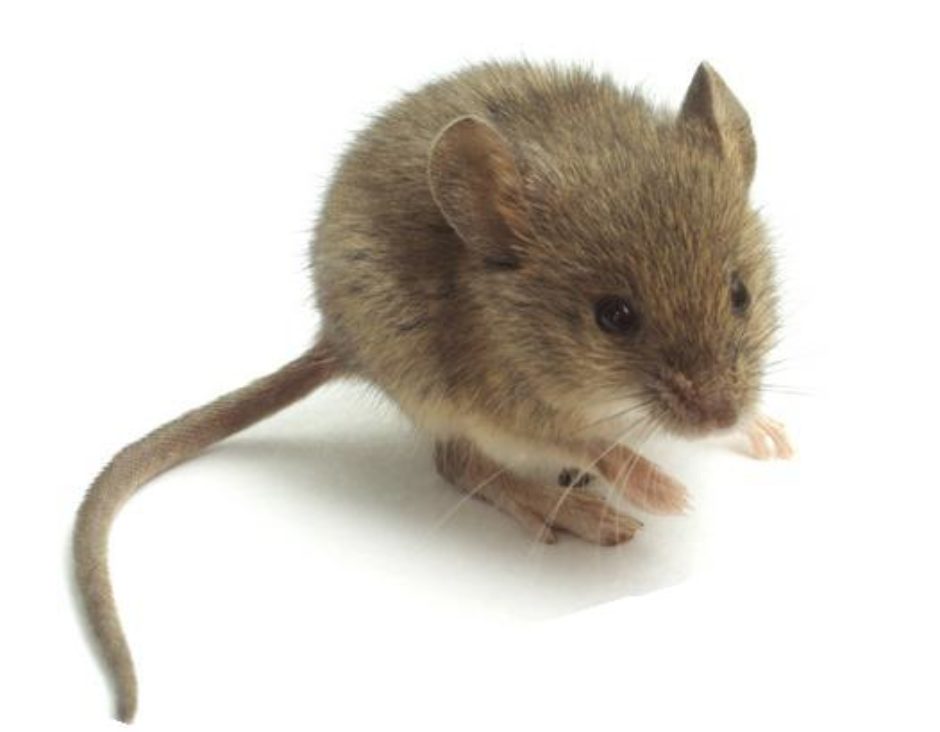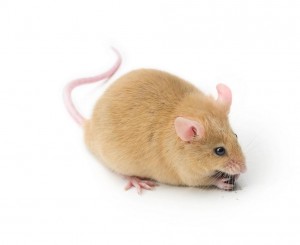“Eeek! There’s a mouse in the house.” In the old classic cartoons maybe the lady standing on the chair holding her skirts up and screaming bloody murder over a tiny mouse knew something about mice that you don’t?
This is what mouse poop looks like. We know you don’t wanna see it, but now you know one way to find out if there’s a mouse in your house.
Admittedly, the terrified cartoon lady is probably overreacting because one little mouse is most likely not dangerous, but what if your home is infested by mice? Where there is one mouse there could be many. Did you know that mice reproduce so quickly that one breeding pair can produce as many as 200 offspring in four months, a downright population explosion?
Should you be concerned if you see a mouse in your house? If the health and safety of your family is important to you the answer is yes. Even though one mouse is certainly not cause for panic, it is cause to begin becoming an astute observer.
Health Implications
Mice are known carriers of viruses and bacteria, and also heavily infested with other pests like ticks, lice, fleas and mites-all of which can be seriously detrimental to your health.
Direct Infection – Through urine, droppings or saliva, deer mice and several other common species of mice transmit the Hantavirus, a potentially deadly virus that causes Hantavirus pulmonary syndrome. Humans become infected when they inhale the aerosolized virus. According to the Center for Disease Control (CDC), this virus has been identified throughout the United Sates and the primary mode of prevention is rodent control in and around the home.
Mice are also carriers of the lymphocytic choriomeningitis virus (LCMV). This virus is particularly dangerous to pregnant women because the virus can pass from infected mother to unborn baby resulting in the loss of the pregnancy or severe birth defects in the developing fetus. Transmission of the virus from mice to humans occurs when urine, blood, saliva, droppings or nesting materials of carrier mice come into contact with humans through a break in the skin, a bite from an infected rodent or inhaling bacteria laden dust or droplets while sweeping infected droppings. It is estimated that 5% of adults have positive blood tests for LCMV indicating infection at some time in their lives. A person with a normal immune system may be infected but have no symptoms. On the other hand, some people manifest flu-like symptoms such as fever, chills, headache and muscle aches. In severe infections, meningitis may result.
Indirect Infection – Mice are also hosts for immature deer ticks (which carry certain pathogens like the bacterium, Borrelia burgdorferi, the cause of Lyme disease in the United States), fleas that transmit rickettsial infections and other diseases to humans, and disease-carrying lice. (For a list of diseases known to be transmitted by rodents-some of which are mice, see cdc.gov/rodents/diseases.)
Most Common Mouse Types
The four most common mouse types found in the United States are the (1) house mouse (2) deer mouse (3) roof rat and (4) Norway rat. The largest is the Norway rat and the smallest the deer mouse. You can distinguish one from the other by tail length, fur color, size of ears and eyes, and shape of the nose. Visit orkin.com/rodents/house-mouse for pictures of the four types.
What to Watch For
Mice are attracted to food, water and warmth, the primary reasons for invading homes and outbuildings. In northern climates, home owners tend to see mice more regularly in the colder months because warm, dry homes provide snug shelter. Mice also seem to be more prevalent during and after severe weather conditions like hurricanes because they migrate from outside to inside seeking protection from the elements and from place to place in search of new food.
Even without seeing a mouse, you’ll know you have at least one if you see mouse droppings in places like the kitchen, basement, attic, garage, barns and outbuildings. Like humans, mice are omnivores meaning they eat both meat and plants and if they are hungry, they will chew their way through plastic cans on lids, box tops, even electrical wires. In the process of eating, mice contaminate food with their bodies and their excrement. In fact, mice contaminate 10 times the amount of food they eat and one mouse can devour 2-3-grams of food per day or up to 11 ounces.
You might also see the remnants of nests. Nests are usually made from easily accessible materials such as grass, hair, feathers, leaves, shredded cloth and paper, milkweed silk, moss, cotton, or straw and resemble messy bird nests. Even if you do not find a nest, watch for other clues like shredded shelf paper which may indicate a nest in progress somewhere in your house.
Another clue that you might have a mouse in the house is the presence of gnawing marks on foodstuffs and around holes. Sometimes you can hear mice, especially at night, chewing away or scrambling about in the walls. It’s enough to keep you awake!
What You Can Do to Prevent Mice in Your Home
The Center for Disease Control (CDC) recommends eliminating possible rodent food sources and nesting possibilities by implementing the following steps:
Store food in closed containers made of glass, metal or thick plastic. (A hungry mouse can chew right through the top of a cereal box.)
Don’t leave pet food or water bowls out during the night because this is the time when mice, nocturnal creatures, are most actively looking for food.
Use rodent-proof, closed garbage and trash bins. Take trash and garbage out of the kitchen at the end of the day to avoid tempting hungry scavengers with leftovers.
Clean up food spills, dishes and tableware as soon as possible.
Keep outdoor grills clean.
Birdfeeders should not be placed near the house and compost piles should be at least 100 feet away.
If you store feed, grain or other animal food in an outbuilding, store it in rodent-proof containers so as not to attract unwelcome guests.
Elevate hay, woodpiles and garbage cans 1 ft. or more off the ground to avoid creating easy nesting places outside your home.
Keep your grass short and trim the shrubbery around the house to reduce hiding places for mice.
Don’t store unused vehicles and tires on your property unless you want to provide a free hotel for four-legged creatures.
Trapping and Removal
If you think your problem is only a couple of mice, the CDC recommends setting snap traps of the appropriate size and baiting them with peanut butter (and you thought mice liked cheese). Set traps in places like attics, basements and crawl spaces where evidence of mice has been discovered, but not in areas likely to be discovered by children and pets. Position the bait in the trap, then put the bait end of the trap against the wall to form a “T” with the wall. (Mice prefer to run next to walls as opposed to out in the open.)
Always wear gloves when picking up mice or removing them from a trap. Place the mouse in a plastic bag and seal, then into another plastic bag for disposal. By the way, releasing a live mouse into the wild will only postpone its return to your house.
Sealing Entry Points
In addition to trapping, eliminating food sources and reducing nesting possibilities, it is essential that you seal up holes and gaps that allow mice to enter your home and navigate from place to place. Even a hole the size of a nickel is large enough to accommodate a mouse.
Inside – The most common places to discover the holes and gaps in your home are around, behind and under kitchen cabinets and appliances, washers & dryers, fireplaces, pipes, doors, drains and vents. Also check inside closets near the floor corners, attics, basements and crawl spaces.
Outside – Look for holes and gaps around windows, doors, foundation, attic and crawl space vents. Gaps are common under doors, roof rafters, gables and eaves. Mice also enter homes through holes made for electrical, plumbing, cable and gas lines.
Professional Remediation
Prevention – If you are like most people, prevention measures like eliminating food sources and nesting places is easily managed in the house, but sealing up gaps and holes correctly is quite another matter. Unless you want to spend hours caulking, stuffing steel wool in holes, nailing screening, applying flashing, and affixing metal sheeting and hardware cloth over gaps, here’s where a professional pest control agent not only comes in handy but is a valuable, time-saving, cost effective alternative to a do-it-yourself repair.
Elimination – If you have an infestation of mice, the safe way to approach ridding your home of these dangerous pests is to hire a professional exterminator. A trained technician will use an effective, safe and up-to-date method of eradication saving you from being infected inadvertently by a bacteria or virus during the clean up process. Once the infestation is eliminated and your home is sealed correctly, the likelihood of reoccurrence is greatly minimized. A periodic follow-up is recommended.
Unfortunately, the best laid plans of mice and men aren’t always compatible and a mouse in your house could do more than keep you up at night. Cohabitation is ill-advised. Rid your home of mice, protect the health of your family and get a good night’s sleep for a change!


